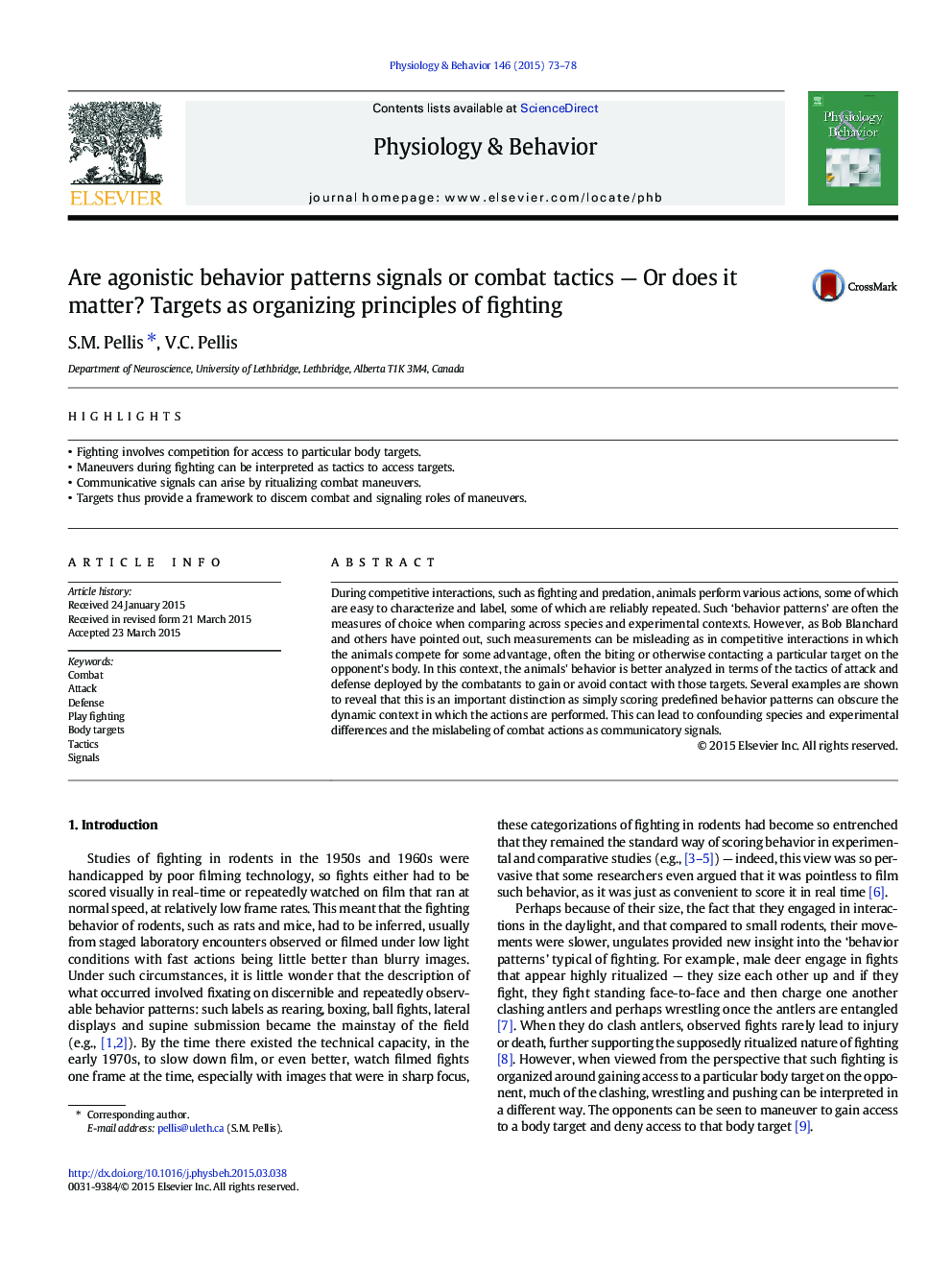| کد مقاله | کد نشریه | سال انتشار | مقاله انگلیسی | نسخه تمام متن |
|---|---|---|---|---|
| 2844076 | 1571171 | 2015 | 6 صفحه PDF | دانلود رایگان |
• Fighting involves competition for access to particular body targets.
• Maneuvers during fighting can be interpreted as tactics to access targets.
• Communicative signals can arise by ritualizing combat maneuvers.
• Targets thus provide a framework to discern combat and signaling roles of maneuvers.
During competitive interactions, such as fighting and predation, animals perform various actions, some of which are easy to characterize and label, some of which are reliably repeated. Such ‘behavior patterns’ are often the measures of choice when comparing across species and experimental contexts. However, as Bob Blanchard and others have pointed out, such measurements can be misleading as in competitive interactions in which the animals compete for some advantage, often the biting or otherwise contacting a particular target on the opponent's body. In this context, the animals' behavior is better analyzed in terms of the tactics of attack and defense deployed by the combatants to gain or avoid contact with those targets. Several examples are shown to reveal that this is an important distinction as simply scoring predefined behavior patterns can obscure the dynamic context in which the actions are performed. This can lead to confounding species and experimental differences and the mislabeling of combat actions as communicatory signals.
Journal: Physiology & Behavior - Volume 146, 1 July 2015, Pages 73–78
